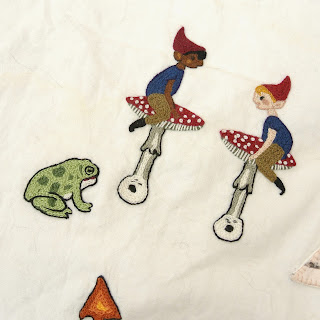Hey folks, it's Elizabeth here, and I'm so excited about this fun fact!
Today we're talking about making pleats. Specifically, the math and logic of pleats.
Let’s begin with basic pleat structure. If you’ve never made pleats before, here’s a quick tutorial.
If you are working from a pattern, you’ll often see a marking of a solid line with an arrow connecting it to a dotted line (top right picture).
To make the pleat, fold and pick up the fabric on the solid line and bring it to meet the dotted line. There’s your basic pleat, or knife pleat.
Sometimes you’ll just baste across the top of the pleat, other times you might edgestitch along the length of the pleat. You can do whatever your pattern suggests.
Often, when I’m working with pleats, I’m not using a pattern. That means I get to figure it out myself! Generally, I am pretty easygoing about pleats. They definitely don’t need to be perfect! If my pleats vary a little, I do not care. But there is a little bit of math we can do to take some of the guesswork out.
In these examples, let’s suppose we’re trying to fit a big piece of fabric - such as the top of a skirt or a ruffle - into a finite, smaller measurement - like the skirt’s waistband, or whatever you’re attaching the ruffle to.
A pleat makes a Z-fold in your fabric, which means that you’re creating three layers out of one. That means your pleated fabric takes up only 1/3 as much space as your original fabric.
If your pleats just touch each other, your starting fabric length should be three times your desired finished length. 3” of fabric will pleat into 1”, or 30” will pleat into 10”, and so on.
That’s the simplest way. But let’s explore some other examples, starting with spaced out pleats.
Check the diagram below with 1" pleats and 1/2" spaces. That places each pleat one half pleat width apart.
We can count up the finished length of three pleats plus three spaces to equal 4 1/2". Then we can count up the total fabric length to get 10 1/2".
4.5 x 2.333 = 10.5
So, if your pleats are one half pleat width apart (like our example above) cut your fabric 2.333 times your desired finished length.
If your pleats are one pleat width apart (for example, 1” pleats with a 1” space in between) cut your fabric 2 times your desired finished length. (This example is not pictured.)
Sometimes we want our pleats to be even closer than just touching - we want them to overlap. This is common when pleating a very full skirt.
We generally can’t have pleats overlap by one whole pleat width, because then we’d just get a giant stack of pleats that went nowhere but up! So let’s move on.
For pleats that overlap by half the pleat width, cut your fabric 4.333 times the finished width you need. (I didn't draw this one, so you'll just have to trust me.)
For other kinds of spacing, you can sketch it out on paper and experiment! Spoiler alert: that’s all I have done to figure these out.
It’s crucial to remember that the size of the pleat DOES NOT MATTER for these formulas. A 1” wide pleat triples the fabric, and so does a ½” wide pleat. We’re using a 1” example just to make it simple.
Okay, now that we’ve done all that math, it’s important to remember that fabric and human hands are not mathematically perfect. Fabric moves and stretches and wiggles, and there is a limit to the accuracy of human hands.
So if you do all this work and your pleats are still not perfect, don’t despair! Here are a few more tips:
- With most fabrics, your pleats will have a tendency to “grow” or spread out, so I always make mine spaced slightly closer than I need.
- It’s easy to go back and adjust one or two pleats to get the fabric to the desired length, and it generally won’t be visible in the finished garment.
- Box pleats are two knife pleats facing each other, so when doing the math for box pleats, you just count it as two pleats.



















